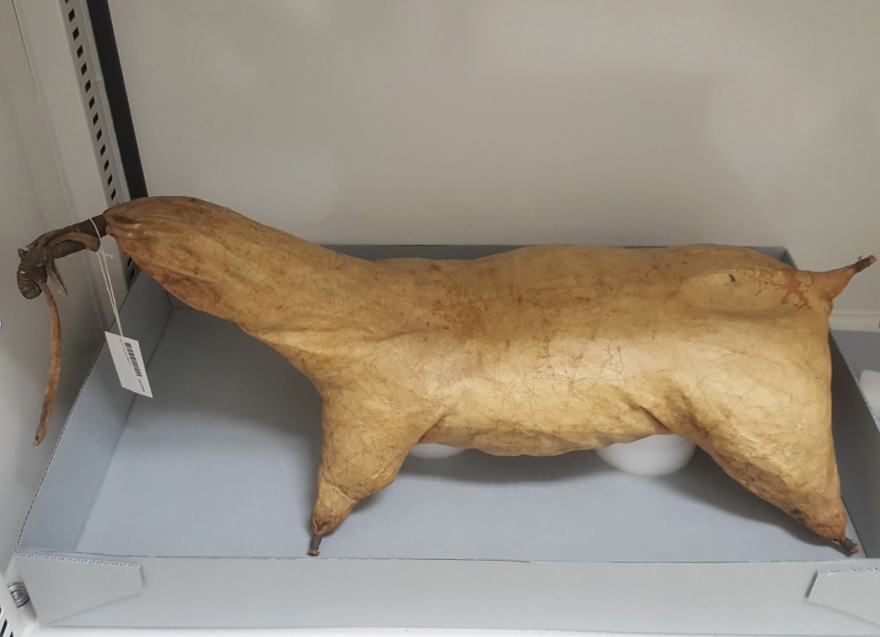A woman who studies museum collections made a trip to Bethel from New York City this March, seeking to learn more about things she had been looking at in back rooms and exhibition halls on the East Coast. What these things said about the people who made them and their relationship to seals brought her to the Yukon-Kuskokwim Delta.
As she read through the records of 19th century expeditions to the Delta, and examined the "material culture," or what they brought back with them, Alexandra Beuscher found herself drawn to things made from seal skin and guts.
Looking at these objects, it occurred to her that they were the work of people who not only hunted and ate these animals, but actually lived with and even "in" seals. The objects that initially kindled that idea were the seal skin pokes and floats.
"In storage rooms and in the back of kayaks there were these inflated seal skins that actually looked like a live seal because it's just the whole skin filled with seal oil or food material, or inflated as a flotation device or a hunting tool. Even if these animals are dead they are still present in this way."
She also found hunters' parkas made of seal gut and ocean-going boats that were covered in seal skin.

"So they are completely sealed off by the skin of the seal, sort of becoming a seal, entering their world in order to engage in this exchange, which is what the hunt in Yup'ik thought entails. The idea is the seals are interested in land-based materials such as fresh water, such as tea. They want to come to land. So the hunter's job is to allow the seal to be taken as a guest. So these seal-sourced materials create vessels in which the human is allowed to travel and engage into a cultural exchange with another species."
Objects involving the seal were everywhere. Then she discovered that the seal bladder was believed to hold the soul. That made her look again at the kayak and other designs that she found carved and painted on various objects.
"In the drawings of seals in x-ray view, you have the line from front to back with the round organ in the center, the same with the round opening in the front of the kayak. I believe that these design choices are not (laughs) not random. You know they are design choices and I think they are related. These layers are meaningful."
The objects and the story they told would become the thesis for her master's degree in "material culture."
When Alexandra came upon the story of the boy who became a seal to learn how to become a hunter, it all made sense to her. That story tells how a boy goes into the ocean and is taught by the seals to look up through the holes in the ice made by seals, and watch the hunter who shovels the snow off the ice hole to keep it clear; the one who treats his tools well and who treats other people respectfully; the person who is humble and respectful to the animals and the world around him. In the story, the seal, who used to be a boy, is told that "this kind of person is who you want to let become your host. He is the hunter you will present yourself to."
"They always have to see their own behavior through the eyes of the seals to make sure they were acting in a way that would be pleasing and welcoming as a host to the seals. That's another key concept. The seals don't die when they are hunted. They are able to survive when they are hunted correctly by a respectful hunter. Their soul goes to the bladder and is recycled when the bladders are given back to the sea."
This year, as spring break came around and other students headed south to beaches, Alexandra Beuscher instead flew north to Bethel to meet the descendants of the people who had made the objects. Here she found another, more modern, story which she wants to include in her thesis. It's the story of a people who still live close to the land and sea and eat ainereaq (dried seal meat).
Tuai (that's it).

